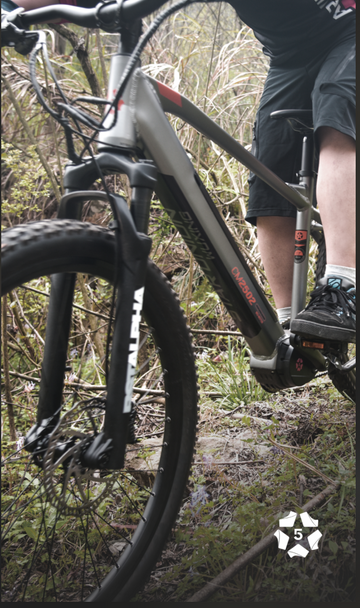Choosing the Right Hydraulic Disc Brakes for Mountain Bikes and Road Bikes: Performance, Benefits, and Selection Guide
by YunaLi on Feb 17, 2025

Introduction: The braking system is a critical component of cycling safety, especially when it comes to mountain bikes and road bikes. Choosing the right braking system not only impacts your riding experience but also directly affects your safety on the bike. Hydraulic disc brakes have become a popular choice among cyclists due to their superior performance. If you’re planning to upgrade your braking system or are simply curious about hydraulic disc brakes, this guide will help you understand their advantages and how to choose the right one for your needs.
1. Hydraulic Disc Brakes vs. Mechanical Disc Brakes The primary difference between hydraulic and mechanical disc brakes lies in their operation. Hydraulic disc brakes use fluid to transmit pressure, providing smoother and more consistent braking power. On the other hand, mechanical disc brakes use steel cables to activate the brake calipers, which can be less precise and responsive.
Advantages of Hydraulic Disc Brakes:
· Stronger and Smoother Braking Power: Hydraulic systems offer consistent and powerful braking force, regardless of temperature or weather conditions. This makes them ideal for high-intensity cycling.
· Better Riding Experience: Hydraulic disc brakes provide smoother braking action with less hand fatigue, especially useful for long-distance rides or rough terrain.

2. Hydraulic Disc Brake Selection for Mountain Bikes Mountain biking involves rugged terrain, steep descents, and sometimes challenging weather conditions. Hydraulic disc brakes are essential for ensuring safe and reliable braking in these situations. When choosing hydraulic disc brakes for mountain bikes, consider the following factors:
· Brake Rotor Size: Mountain bikes typically use larger brake rotors, ranging from 160mm to 200mm. Larger rotors provide greater braking power, especially during fast descents or on uneven terrain.
· Performance in Tough Terrain: Mountain bikes are frequently exposed to muddy, wet, or uneven conditions. Hydraulic disc brakes must perform well in all types of weather and terrain. Choose a brake system that offers consistent, reliable braking in challenging conditions.
· Brake Feel and Adjustment: Mountain biking often requires fast response times and precise braking control. Look for hydraulic disc brakes that offer easy adjustments and responsive brake feel to help you navigate tricky trails and obstacles with confidence.
3. Hydraulic Disc Brake Selection for Road Bikes While road biking generally involves smoother, more predictable terrain, brake responsiveness and control are still crucial. Given the higher speeds associated with road cycling, choosing the right hydraulic disc brake is vital for safety. Consider the following when selecting hydraulic disc brakes for road bikes:

· Brake Rotor Size: Road bikes typically use smaller rotors, ranging from 140mm to 160mm, to reduce weight and optimize braking performance at high speeds. Smaller rotors are ideal for the high-speed, low-resistance nature of road cycling.
· Lightweight and Efficiency: Road bike riders tend to focus on reducing overall bike weight to improve performance. Choose hydraulic disc brakes that are lightweight and help maintain a responsive, efficient riding experience.
· Precise Braking Control: Road cycling often requires fine-tuned braking, especially when cornering, maneuvering through traffic, or descending at high speeds. Ensure that the hydraulic disc brake system you choose provides smooth and precise control.
4. Maintenance and Care for Hydraulic Disc Brakes Although hydraulic disc brakes provide superior performance, they still require regular maintenance to ensure optimal operation. Here are some essential maintenance tips:
· Check Brake Fluid Levels: Hydraulic disc brakes rely on brake fluid to transmit pressure. Regularly check the brake fluid levels and replace the fluid if it becomes contaminated or too low, as this can affect braking performance.
· Clean Brake Rotors and Pads: Brake rotors and pads can accumulate dirt, oil, and other debris, which can compromise braking power. Regularly clean these components to ensure smooth braking performance.
· Inspect Brake Pads for Wear: Brake pads wear down over time and need to be replaced to maintain proper braking force. Check the thickness of the pads and replace them when necessary to avoid poor braking performance and damage to the rotors.

· Ensure Proper Sealing: The hydraulic system is sealed to prevent contamination, so inspect the brake lines, calipers, and other components for leaks or damage. Keeping the system sealed ensures long-lasting performance.
Conclusion: Hydraulic disc brakes are an excellent choice for both mountain bikes and road bikes, providing superior braking power and control. By understanding the key features of hydraulic disc brakes and choosing the right system based on your riding style, you can enjoy a safer and more comfortable cycling experience. Whether you're tackling steep mountain trails or cruising down open roads, a well-chosen hydraulic brake system will make your rides smoother and more reliable.




